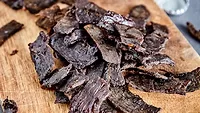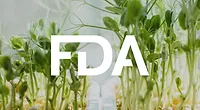New AFDO Guidance Comparing PSR Inspections and USDA Audits

Credit: analogicus via Pixabay
The Association of Food and Drug Officials (AFDO) recently published a new document, “AFDO Produce Safety Rule Inspections and Voluntary USDA Audits: Guidance to Help Understand the Differences and Commonalities.” The guidance is intended to help clarify the differences between mandatory requirements of the Produce Safety Rule (PSR) under the U.S. Food and Drug Administration’s Food Safety Modernization Act (FDA’s FSMA) and the requirements within market-driven, buyer-specific audits.
The guidance includes a chart that explains the differences and commonalities between PSR inspections and U.S. Department of Agriculture (USDA) audits, and also defines commonly misunderstood terms such as ‘audits’ and ‘inspections.’ The document also explains the roles of FDA, USDA, and PSR in ensuring produce food safety. Various resources for industry are offered in the guidance.
The types of Good Agricultural Practices (GAP) audit programs offered by USDA are explained, including the USDA GAP, Harmonized GAP, and Harmonized GAP Plus+ audits. The USDA GAP audit is USDA’s foundational GAP audit, which is aligned with FDA’s “Guidance for Industry: Guide to Minimize Microbial Food Safety Hazards for Fresh Fruits and Vegetables.” The USDA Harmonized GAP audit is aligned with the Produce GAP Harmonization Initiative and the FSMA PSR, in addition to industry best practices. Finally, the USDA Harmonized GAP Plus+ audit expands on the USDA Harmonized GAP audit by including additional requirements, enabling the program to be recognized by the Global Food Safety Initiative (GFSI) Technical Equivalence process.
The chart included in the guidance clarifies a variety of points about FSMA PSR inspections, USDA GAP audits, and USDA Harmonized GAP/Harmonized GAP Plus+ audits. Topics broached in the chart include frequency, cost, outcomes, included commodities, covered hazards, requirements, and other factors related to PSR and GAP audits. The chart also clarifies audit responsibilities regarding pre-harvest agricultural water testing.
Looking for quick answers on food safety topics?
Try Ask FSM, our new smart AI search tool.
Ask FSM →








